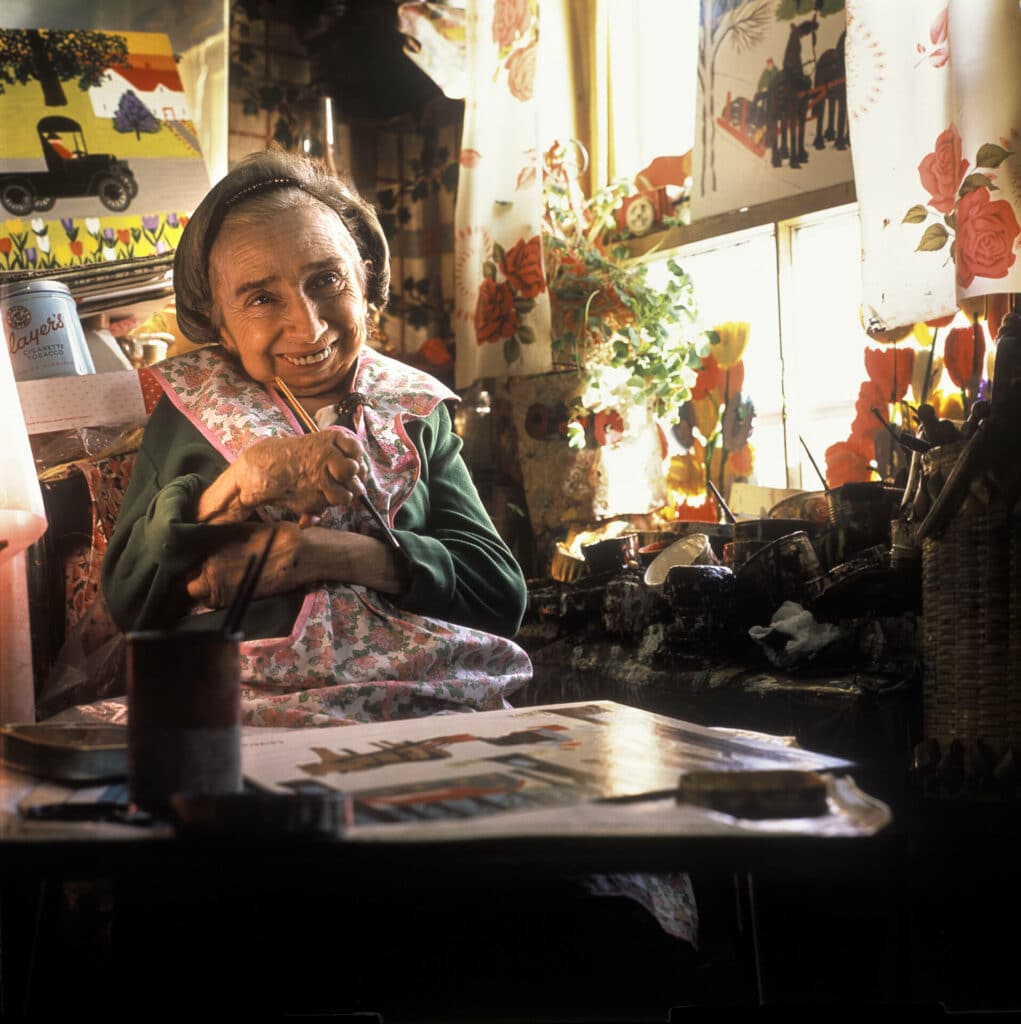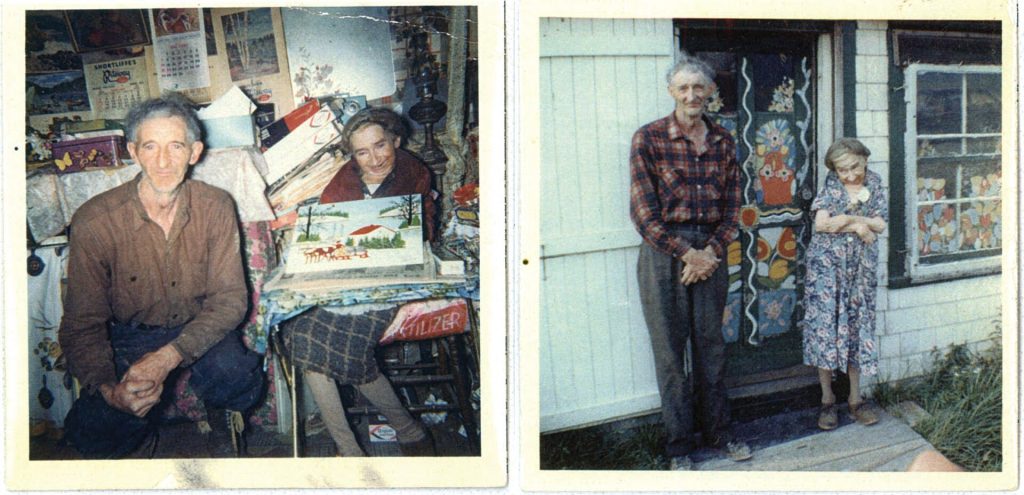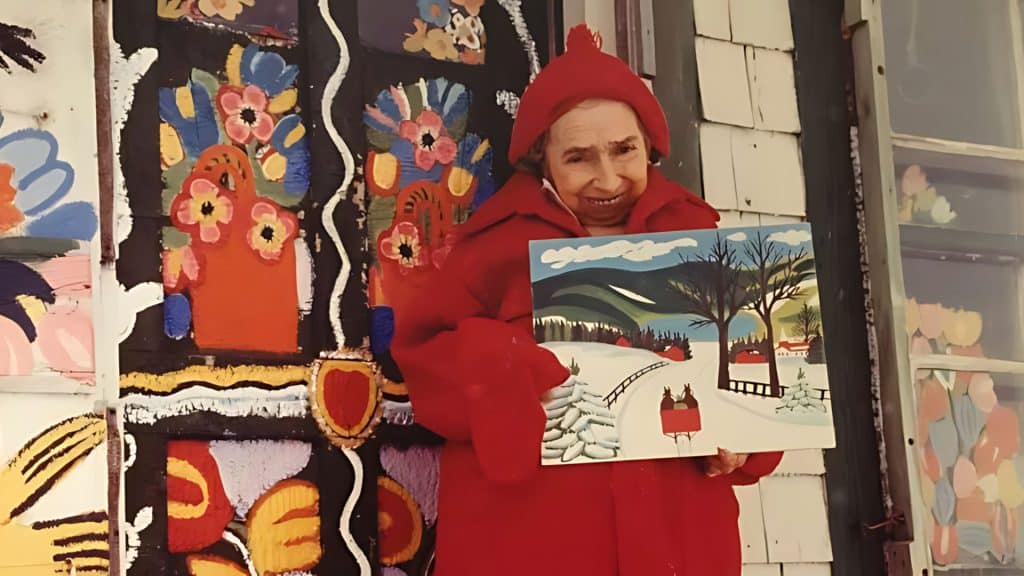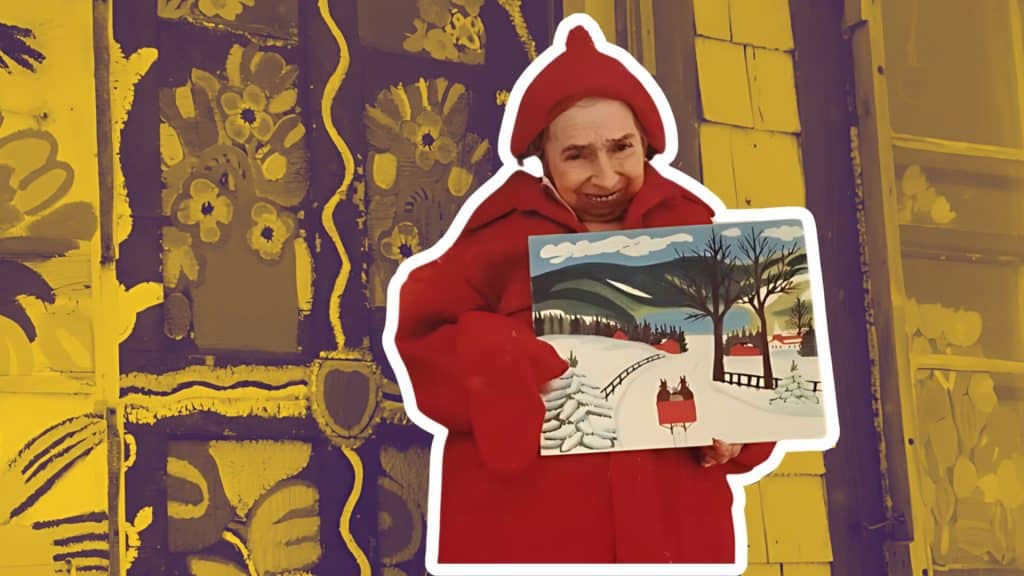Did you know Maud Lewis had a daughter?
Many are surprised to learn about Catherine Dowley, the child Maud gave up for adoption in her youth.
The heartbreaking decision haunted the famous folk artist throughout her life as she struggled with poverty, disability, and a difficult marriage.
Be prepared to be amazed as we uncover astonishing family connections that shed new light on Maud’s complex past and the child she left behind.
From the father’s identity to Catherine’s attempts to reconnect with her mother, these revelations will leave you speechless.
Join us on a journey through Maud Lewis’s untold history and discover the hidden ties that shaped her world.
Maud Lewis’s Childhood

Maud Lewis, born Maud Kathleen Dowley, grew up in a modest but loving family in Yarmouth, Nova Scotia, despite facing significant physical challenges from a young age.
From birth, she grappled with physical deformities, including sloped shoulders, a curved spine, and a recessed chin, later attributed to juvenile rheumatoid arthritis.
The condition caused chronic pain and limited her mobility throughout her life.
Raised in the small village of South Ohio, Maud attended the local one-room schoolhouse.
However, her health issues and physical differences made her a target for bullying and ridicule from classmates.
Unable to endure the constant teasing, Maud left school after completing fifth grade.
Maud’s Family Life
Maud’s parents, John Nelson Dowley and Agnes Mary German, provided a supportive home environment.
John, a respected blacksmith and harness maker, ensured the family a stable, modest living.
Agnes nurtured Maud’s artistic talents, teaching her to play the piano and encouraging her to explore drawing and painting.
Maud’s older brother, Charles Dowley, born in 1897, found success as the manager of Yarmouth’s Capitol Theatre and a musician.
Despite his accomplishments, Charles had a complicated relationship with Maud, particularly after their parents’ deaths, when he refused to allow her to live in the family home.
Relationships with Extended Family
Following the devastating loss of her parents in the mid-1930s, Maud found herself in a precarious situation.
Her brother, Charles, had inherited the family home and refused to allow Maud to stay, leaving her without a place to call her own.
In desperation, Maud’s maternal aunt, Ida German, extended a lifeline, inviting Maud to live with her in Digby in 1937.
Aunt Ida’s kindness gave Maud the stability and feeling of belonging she needed during a very hard time.
Living with Aunt Ida gave Maud a roof over her head and a nurturing environment that encouraged her artistic pursuits.
Ida recognized and supported Maud’s inherent talent and passion for painting, helping to reignite her creative spirit during this challenging period.
This newfound support and encouragement played a crucial role in boosting Maud’s confidence and setting the stage for her future artistic endeavors.
While Aunt Ida’s influence was significant, Maud’s relationships with other family members were limited.
Her brother, Charles, had played a prominent role in her early life but later distanced himself, particularly after denying Maud a place in the family home.
Beyond Charles and Ida, Maud had minimal contact with other relatives, contributing to her sense of isolation and the ongoing challenges she faced in her personal life.
The limited involvement of other family members inadvertently reinforced Maud’s independence and determination to forge her path.
Maud discovered a way to thrive even without a broad family network through her art and the unwavering support of key individuals like Ida.
Maud’s Hidden Daughter
1. Early Love and Pregnancy
In her youth, Maud Dowley fell deeply in love with Emery Allen, a local man who showed affection despite her physical challenges.
Their relationship took a life-altering turn when Maud became pregnant with Emery’s child in 1928, a time when having a child out of wedlock was heavily stigmatized.
On August 13, 1928, Maud gave birth to a daughter named Catherine Dowley.
Due to the societal pressures of the time and Maud’s precarious financial situation, Catherine was given up for adoption shortly after her birth.
Fortunately, she was raised by her loving adoptive mother, Mamie Crosby, who provided her with a stable and nurturing environment.
2. The Hidden Truth
After the adoption, Maud was told the devastating lie that her daughter had died, intensifying her grief and sense of loss for years to come.
However, the truth eventually surfaced – Catherine was alive and had been raised by a loving adoptive family.
In the 1960s, Catherine discovered the identity of her biological mother and made several attempts to reconnect with Maud.
She even traveled to Marshalltown, where Maud resided, hoping to meet her.
Despite her earnest efforts, these attempts at reconciliation were largely unsuccessful, as Maud remained distant and unwilling to acknowledge their connection.
She insisted that her child was a boy who had died at birth.
This painful rejection, probably a way for Maud to deal with the original lie and later guilt, greatly affected both Catherine and Maud.
It showed how much society’s expectations and personal pain can hurt people, even many years later.
Maud’s Marriage to Everett Lewis

1. Meeting Everett
In 1937, a newspaper ad forever altered the course of Maud Dowley’s life.
Everett Lewis, a fish peddler seeking a housekeeper and potential wife, had placed the advertisement that caught Maud’s eye.
At the time, Maud desperately sought stability and a place to call home after being excluded by her family and living with her aunt.
Although their initial meeting was far from romantic, Maud and Everett soon agreed that she would move in not as his housekeeper but as his wife.
Maud and Everett got married on January 16, 1938.
Maud then moved into Everett’s small house in Marshalltown, Nova Scotia.
The simple home was only 15 square meters and didn’t have running water, electricity, or good insulation.
Little did they know, this cramped space would become the backdrop for their shared life and Maud’s extraordinary art.
2. Family Dynamics
Everett Lewis’s background and his complex relationship with Maud played a significant role in shaping her life and artistic journey.
Born in 1893, Everett had endured a difficult childhood, spending time in the Marshalltown Poor Farm after his father abandoned the family.
Before marrying Maud, he worked various jobs, including fish peddling and guarding at the Poor Farm.
Their relationship was often strained, with Everett known for his harsh and controlling nature.
However, he also supported Maud’s painting by providing materials and assisting with selling her artwork.
Due to her severe arthritis and physical limitations, Maud was unable to perform many household chores.
Instead, she contributed to their meager income by creating and selling her vibrant paintings.
She transformed their tiny home into a captivating artistic space, covering nearly every surface with her unique designs.
Everett encouraged Maud’s passion by cutting boards for her paintings and fetching supplies.
He also played a crucial role in promoting her work, which helped establish her growing local reputation.
Despite the support, Everett’s control over finances and decision-making often added tension to their complex relationship.
How Maud’s Family Ties Shaped Her Art and Legacy

1. Influence on Her Art
Her personal experiences and family relationships deeply influenced Maud Lewis’s art.
It reflected the joys, sorrows, and struggles that defined her life.
The challenges she faced, from her physical ailments and the loss of her parents to the heart-wrenching separation from her daughter, played a significant role in shaping the themes and subjects of her paintings.
Interestingly, Maud’s artwork often depicted serene, joyful scenes that starkly contrasted her difficult circumstances.
This contrast suggests a longing to create a happier, more idealized world through her art, perhaps to escape from the hardships she endured.
Some of Maud’s most famous works are poignant examples of how her personal life influenced her artistic expression.
One of her most iconic pieces, “Three Black Cats,” showcases her love for animals and the simplicity of rural life, potentially reflecting a yearning for the innocence and joy that eluded her.
Similarly, “Winter Sleigh Ride” captures the simple pleasures of winter and communal activities.
It possibly represents Maud’s desire for connection and belonging.
Maud’s painting “Oxen in Spring” honors her father’s skills and the country life she knew as a child.
This shows how much her family background continued to shape her art.
2. Public Perception and Fame
The public’s perception of Maud Lewis and her art has long been shaped by the striking contrast between her vibrant, cheerful paintings and the harsh realities of her private life.
Although Maud’s paintings were praised for showing a perfect country life, they often hid the fact that she was poor, in pain, and not close to her family in reality.
Many documentaries, books, and movies, like the popular film Maudie, have examined Maud’s complicated life.
They show her strength despite hardships and how much her family relationships affected her art.
People who study and love art continue to examine how Maud’s family life affected her paintings, and her influence stays strong and important.
The fact that people are still curious about her life and the secret family relationships that shaped it shows how much her art and personal story continue to have a lasting impact.
Maud Lewis’s paintings and life story continue to fascinate and motivate people.
They make us think about the complicated connection between an artist’s experiences and the art they create.
Conclusion
The untold story of Maud Lewis and her hidden family ties offers a saddening glimpse into the life of a remarkable artist.
Maud’s difficult early life, giving up her daughter, complicated marriage, and unsuccessful attempts to reconnect with her child greatly impacted her paintings and the mark she left on the world.
With her bright, colorful art, Maud made a happy, simple world different from her hard life.
Her paintings have amazed people and made a big, lasting impact on Canadian art.
As we learn more about Maud Lewis’s private struggles, we see how creativity, inner strength, and the human spirit can help people overcome even the toughest challenges in life.
So, what aspect of Maud’s story resonates most with you?





















